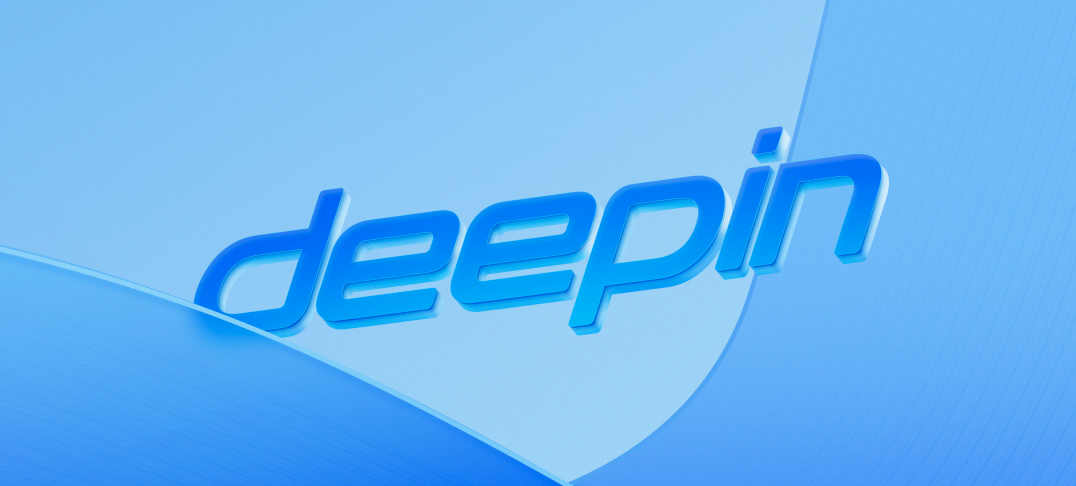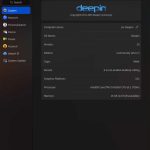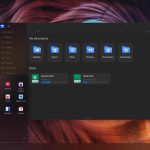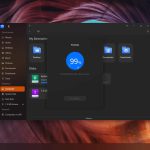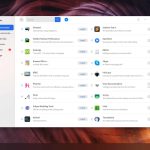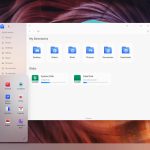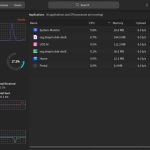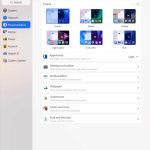I recently experimented with Deepin and was impressed. It’s by far the most well-polished Linux distro that I’ve used. Its appearance has hints of macOS, Windows 11, Gnome, and KDE. It, in some ways, takes the best of those things, and makes a new OS out of them. Very modern looking!
The Good:
- The best looking Linux distro out there. I know this is totally subjective, and some people prefer a system that looks like it came from 1993. But I’m not one of those people. I like modern looking systems and this one nailed it.
- Immutable operating system – I think these will be the operating systems of the future. System updates take a long time, but it’s by far the most secure system because no app can corrupt the OS itself. Of course, you can still get malware that causes other issues, but the OS remains read-only.
- Based on Debian. Like Ubuntu and LMDE, this one is based on the highly respected Debian. But like Mint, it’s extremely easy to use.
- Themes, icons, display, layout are all fun and very modern looking. While Mint is always my go-to system, I do feel like I stepped back ten years or more in time when I went back to Mint after experimenting with Deepin.
- AI is built into the system, which is probably a con for most Linux users. If you don’t like AI, you can refrain from turning that feature on. But if you’re into AI, you can load an offline model that will scan your files and keep tabs on everything. What that means is you can do searches like, “I was working on a spreadsheet for Company ABC yesterday, but I can’t remember what I named the file or where I saved it. Could you help me find it?” They also have an optional subscription based AI that connects to the internet.
- Eye Comfort feature – it has a Night Light that is highly customizable. It goes deep red or just slightly orange (or you can have it go deep blue if you like that kind of thing). Whatever you prefer. Screen brightness can also be tweaked and the screen can automatically display a Light theme during the day and a Dark theme at night.
- The Quick Settings tool has a ton of useful things that are easily accessible.
- Account setup and sign-in during installation is optional, which can help with privacy.
- Performance is not bad. It’s not going to be as fast as Debian or Mint, especially on older hardware, but it will perform decently. It’s probably similar to the performance you’d get from Windows 10 or 11. I put it on a laptop from 2018 (i5-8th gen processor), and it ran just fine. Memory usage was about 2.5 GB after startup.
The Bad
- Not fully translated. Some elements of the operating system still have little bits of Chinese characters, including the intro Welcome Screen. I think the Welcome Screen of every OS should match the selected language, or else it’s not much good.
- Funny translations. I noticed in the Software Store that they machine translated everything from Chinese to English… rather than simply pulling the English description for apps that the app developers have created. This results in oddities like, “No matter where you are, we can contact you!” for Thunderbird or “Moving your finger to fall in love with editing” for OpenShot.
- Text line breaks. When a line runs out of room for text, it picks back up on the next line with no concern for keeping words together. So, words get randomly cutoff in unnatural places, which makes it difficult to read things in the OS.
- Apostrophe usage. Often when an apostrophe (‘) is used, a bunch of spaces are inserted. This is throughout the OS and across apps. So, for Duolingo’s description it says,
“The world’ s #1 way to learn a language.”
All the above amount to an OS that can be a little annoying to navigate at times. It’s not a deal-breaker for me, but it does mean that there’s more work for the developer to do to bring this system to perfection. If those were the only drawbacks, I would strongly consider using this as my daily driver. But alas, there’s some UGLY here…
The Ugly
It’s an almost perfect OS! Almost…
BUT…and there’s a huge ‘but’, it’s Chinese owned. The company behind it, like any Chinese company, is required to have members of the CCP (Chinese Communist Party) on the board. That means the Chinese government is always monitoring the activity of all company meetings and intervening as it wishes. Additionally, their privacy policy was problematic. Take section six for example,
6. In the event that we need to collect personal information of you under your custody beyond the above-mentioned purpose of use, we will explain to you and seek your consent anew. However, according to relevant laws, regulations and national standards, in any of the following circumstances, we may collect and use your personal information without seeking your consent:
6.1. Where it is necessary for performance of our statutory duties or legal obligations;
6.2. When it involves national security, national defense security and other national interests directly and when it involves public security, public health, public right to know and other major public interests;
So, they’ll let you know if they start collecting a bunch of data on you… Or not. Perhaps they’ll “collect and use your personal information without seeking your consent” because their CCP board members have deemed it to be a matter of “national security” or “other national interests” to collect as much info on Americans as possible.
Ultimately, they answer to the CCP, not their users.
With the system being loaded with AI features that scan all your documents and keep tabs on what you’re doing, there’s just too much potential for things to go wrong. And while they argue, “We’re open source, you can check our code and see that we’re safe,” this isn’t the best argument. Here are the reasons for that:
- Analyzing an entire operating system’s worth of code is far beyond what most people could do. For an OS like this, it would take an entire team of highly trained coders or software engineers to vet its safety.
- And even if everything is safe today, what if they injected some malicious code a tomorrow, next week, or a year from now? This code could enable them to spy on you, or worse, use your computer to hack other computers in the US. Such code is probably not in there now, but it could be easily added during a system update.
Summary
In my opinion, Deepin is the best looking Desktop Environment in the Linux world. It’s highly polished, seems quite stable (they’re currently at release 25, so they’ve had many years to work out bugs), it can be customized to the user’s preferences, and it looks so good.
But feeling like I’ve got the CCP watching over my shoulder – or that I might someday in the near future – is too much for me. I’d rather run macOS than this. But playing with Deepin was admittedly a fun experiment.
Have you tried Deepin? What did you think of it?
Below are some screenshots of my desktop that display some of the things I mentioned above.
